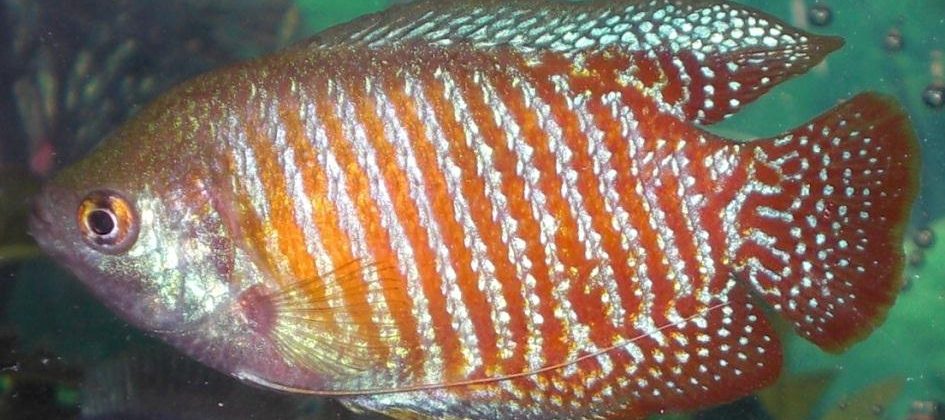The name ‘Dwarf Gourami’ is normally preceded by the fishes colour i.e. the example above or the Coral Blue Gourami.
| Common name: | The name ‘Dwarf Gourami’ is normally preceded by the fishes colour i.e. the example above or the Coral Blue Gourami. |
| Scientific name: | Colisa Lalia |
| Care Difficulty: | Easy |
| Adult Size: | Up to 8cm (3 inches) |
| Original Origin: | South Asia (Bangladesh, India and Pakistan) |
| Tank Size/Setup: | Recommended size of 10 gallons or 45 litres. These fish will be more at home in a well planted aquarium, which will resemble the fish’s natural habitat. They enjoy swimming slowly among the vegetation. |
| Temperament / Compatibility: | They are a peaceful breed and go well with other community fish of the same size or smaller. They tend to be territorial with other male Gourami’s, so if you have more than 1 in the tank the tank should be big enough so that they can have their own area. |
| Water Temperature: | 24°C to 28°C (75°F to 82°F) |
| Water Hardness: | 100 to 300ppm (6 to 18°dgH/kH) |
| Water pH: | 6pH to 8pH |
| Fish Food: | They need a mixture of meat and plant based foods to be kept healthy. They will eat anything from flakes to freeze dried or live food. |
| The Sexes: | Females are normally slightly smaller than the male counterparts. The males also are more brightly coloured and it is quite easy to tell the difference when they are next to each other. |
| Breeding: | Medium difficulty. Requires a heavily planted aquarium with floating vegetation and a temperature of 28°C (82°F).The males build a nest to hold the eggs and the female should be removed after the eggs are laid. Care should be taken in a community tank; the male will become aggressive in its plight to defend the eggs. Once the fry are free swimming they should be separated from the male so that they are not eaten. |
| Average Lifespan: | 4 years |
| Comments: | While the Dwarf Gourami is considered to be an easy fish to keep, care should be taken to ensure that good water quality is maintained. These fish are not recommended for use during the Nitrogen Cycle. Good water quality will also reduce the risk of the fish catching any diseases. |



Leave a Reply